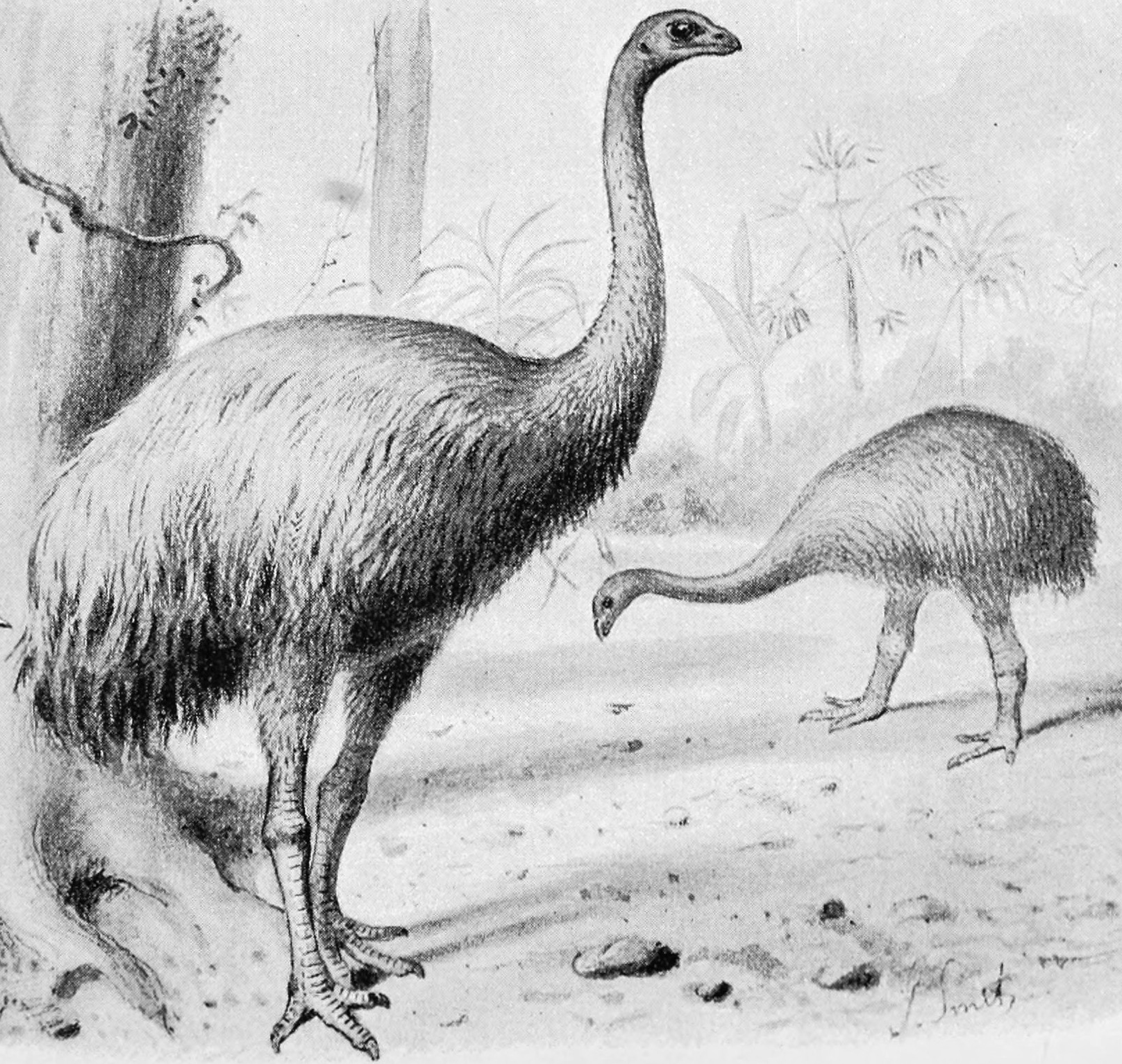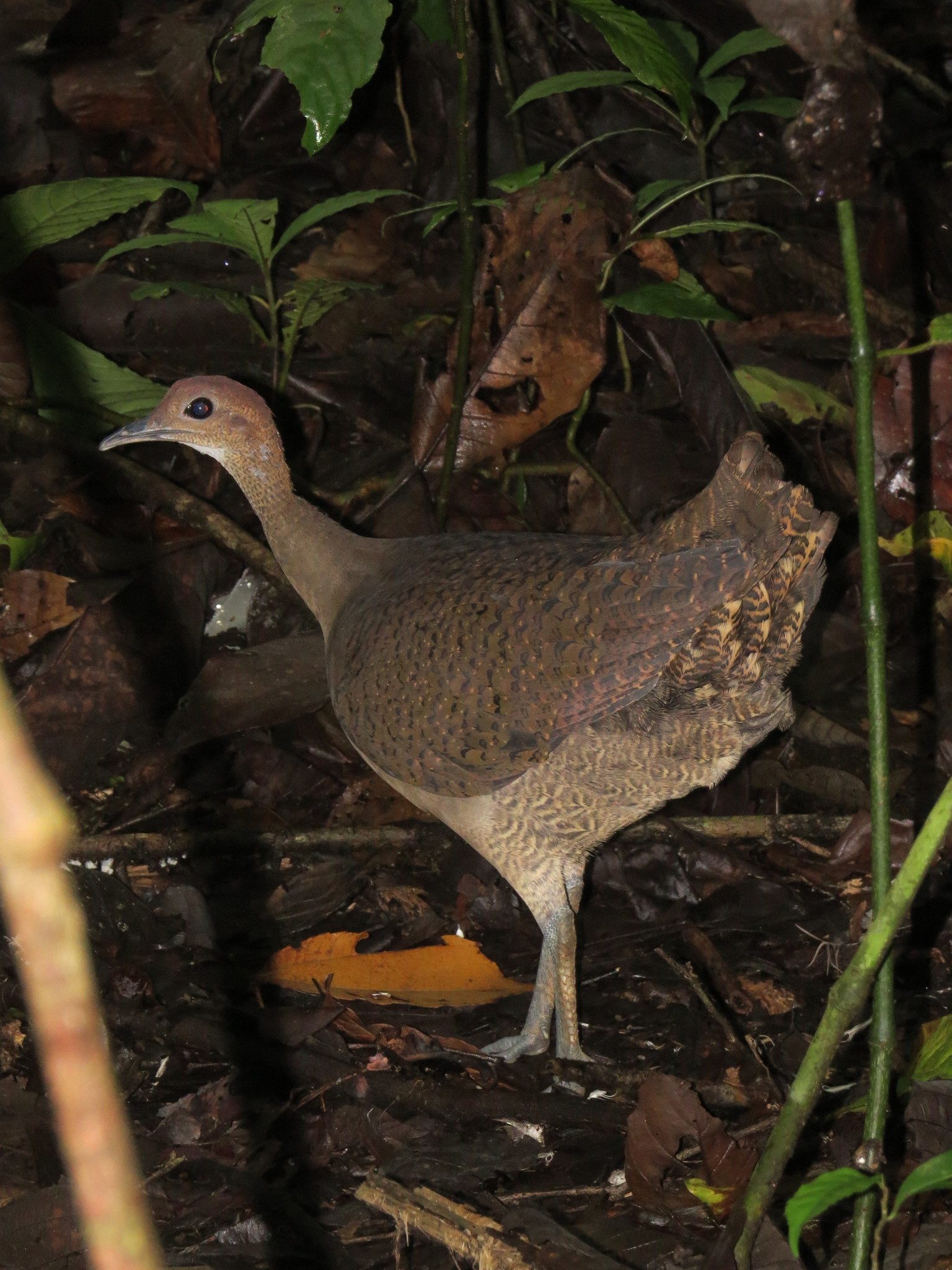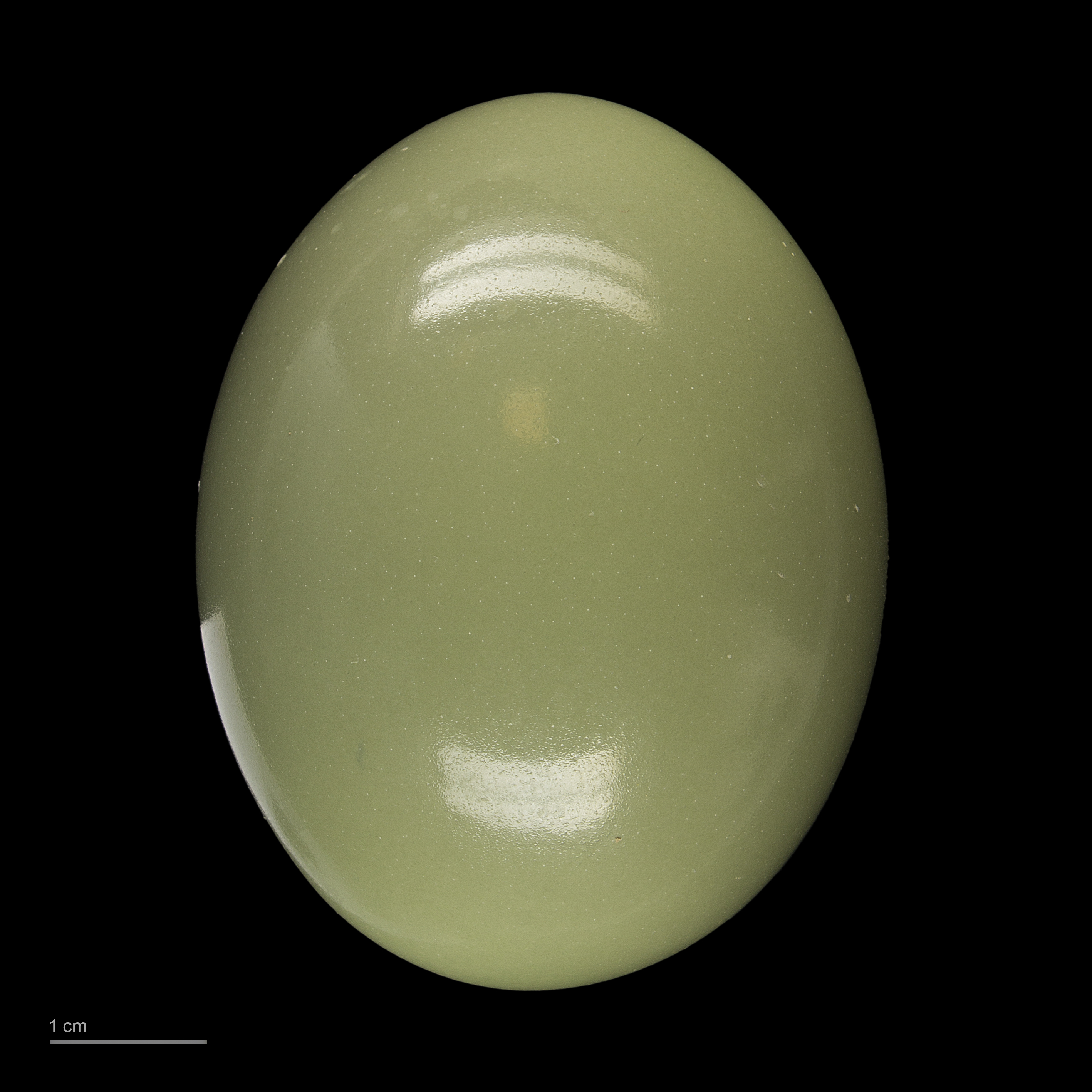|
Tinamiformes
Tinamous () are members of the order Tinamiformes (), and family Tinamidae (), divided into two distinct subfamily, subfamilies, containing 46 species found in Mexico, Central America, and South America. The word "tinamou" comes from the Carib language, Galibi term for these birds, ''tinamu''. Tinamous are the only living group of Palaeognathae, palaeognaths able to fly, and were traditionally regarded as the sister group of the flightless ratites, but recent work places them well within the ratite radiation as most closely related to the extinct moa of New Zealand, implying flightlessness emerged among ratites multiple times. Tinamous first appear in the fossil record in the Miocene epoch. They are generally sedentary, ground-dwelling and, though not flightless, when possible avoid flight in favour of hiding or running away from danger. They are found in a variety of habitats, ranging from semi-arid climate, semi-arid alpine climate, alpine grasslands to tropical rainforests. The ... [...More Info...] [...Related Items...] OR: [Wikipedia] [Google] [Baidu] |
Palaeognathae
Palaeognathae (; ) is an infraclass of birds, called paleognaths or palaeognaths, within the class Aves of the clade Archosauria. It is one of the two extant taxon, extant infraclasses of birds, the other being Neognathae, both of which form Neornithes. Palaeognathae contains five extant order (biology), orders consisting of four flightless bird, flightless lineages (plus two that are extinct), termed ratites, and one flying lineage, the Neotropic tinamous. There are 47 species of tinamous, five of Kiwi (bird), kiwis (''Apteryx''), three of cassowary, cassowaries (''Casuarius''), one of emus (''Dromaius'') (another became extinct in historic times), two of Rhea (bird), rheas (''Rhea'') and two of ostriches (''Struthio'').Clements, J. C. ''et al''. (2010) Recent research has indicated that paleognaths are monophyletic but the traditional taxonomic split between flightless and flighted forms is incorrect; tinamous are within the ratite radiation, meaning flightlessness arose indepe ... [...More Info...] [...Related Items...] OR: [Wikipedia] [Google] [Baidu] |
Tinaminae
Tinaminae, the forest tinamous,Brown, Joseph W. (2005) is one of two subfamily, subfamilies of the family (biology), family Tinamidae, the other being Nothurinae. Description These birds, like other tinamous, are ground birds that prefer to run and walk, but will fly when they must. They differ physiologically by having their nostrils halfway down their bill or more. They range in size from the largest, being the grey tinamou at and the solitary tinamou at , which are also the largest of all the tinamous, to the little tinamou at and and the small-billed tinamou at and . They are a very compact muscular bird, with a slightly wikt:decurved, decurved beak. Their tail is short and rudimentary and appears near non-existent. They have a large amount of feathers on their back and posterior regions. some believe to assist in escaping predators by being able to shed feathers that have been grabbed. Their plumage is drab and cryptic with colors of dark brown, rufous, and buff. They ... [...More Info...] [...Related Items...] OR: [Wikipedia] [Google] [Baidu] |
Nothurinae
Nothurinae or ''aridland tinamous''Brown, Joseph W. (2005) is one of two subfamilies of the Tinamidae family, the other being Tinaminae. It contains eighteen species in six genera. The six genera are: * '' Rhynchotus'' (2 species) * ''Nothoprocta'' (6 species) * ''Nothura'' (5 species) * ''Taoniscus'' (monotypic) - dwarf tinamou * ''Eudromia'' (2 species) * ''Tinamotis'' (2 species) Description These birds, as a member of the tinamou, are ground birds that prefer to run and walk, but will fly when needed. Taxonomy They are related to the ratites (emus, ostriches, kiwis, and rheas), and are placed with them in the Paleognathae. All of these birds evolved from ancient birds that did fly and tinamous are believed to be a still living primitive family closely related to these ancient birds.Davies, S. J. J. F. (2003) Behavior Tinamous eat leaves, buds, small fruits and seeds, and will eats insects for variety. Range and habitat The members of this subfamily live in South America a ... [...More Info...] [...Related Items...] OR: [Wikipedia] [Google] [Baidu] |
Crypturellus
''Crypturellus'' is a genus of tinamous containing mostly forest species. However, there are the odd few that are grassland or steppe tinamous. The genus contains 21 species. Taxonomy The genus ''Crypturellus'' was introduced in 1914 by the British ornithologists Baron Brabourne and Charles Chubb with the Tataupa tinamou as the type species. The genus name combines the Ancient Greek κρυπτός (''kruptós'') meaning "hidden" with οὐρά (''oura'') meaning "tail". The ''-ellus'' is a diminutive so that the name means "small hidden tail". Description ''Crypturellus'' members, like other tinamous, have a cryptic color scheme dominated by browns, buffs, yellows, and greys. Unlike the rest of the family, these birds show some sexual dimorphism: the females are more heavily barred than the males and are also a bit brighter and larger. Range The majority of species occupy forests or rain forests, preferring lower elevations. They range from Uruguay to Mexico. However, the ear ... [...More Info...] [...Related Items...] OR: [Wikipedia] [Google] [Baidu] |
Tinamus Major
The great tinamou (''Tinamus major'') is a species of tinamou ground bird native to Central and South America. There are several subspecies, mostly differentiated by their coloration. Taxonomy The great tinamou was described and illustrated in 1648 by the German naturalist Georg Marcgrave in his ''Historia Naturalis Brasiliae''. Marcgrave used the name ''Macucagua''. The French polymath Georges-Louis Leclerc, Comte de Buffon described and illustrated the great tinamou in 1778 in his ''Histoire Naturelle des Oiseaux'' from specimens collected in Cayenne, French Guiana. He simplified Marcgrave's name to ''Magoua''. When in 1788 the German naturalist Johann Friedrich Gmelin revised and expanded Carl Linnaeus's ''Systema Naturae'', he included the great tinamou and placed it with all the grouse like birds in the genus '' Tetrao''. He coined the binomial name ''Tetrao major'' and cited the earlier authors. The great tinamou is now placed with four other species in the genus '' Tinamu ... [...More Info...] [...Related Items...] OR: [Wikipedia] [Google] [Baidu] |
Ratite
Ratites () are a polyphyletic group consisting of all birds within the infraclass Palaeognathae that lack keels and cannot fly. They are mostly large, long-necked, and long-legged, the exception being the kiwi, which is also the only nocturnal extant ratite. The understanding of relationships within the paleognath clade has been in flux. Previously, all the flightless members had been assigned to the order Struthioniformes, which is more recently regarded as containing only the ostrich. The modern bird superorder Palaeognathae consists of ratites and the flighted Neotropic tinamous (compare to Neognathae). Unlike other flightless birds, the ratites have no keel on their sternum—hence the name, from the Latin ('raft', a vessel which has no keel—in contradistinction to extant flighted birds with a keel). Without this to anchor their wing muscles, they could not have flown even if they had developed suitable wings. Ratites are a polyphyletic group; tinamous fall within the ... [...More Info...] [...Related Items...] OR: [Wikipedia] [Google] [Baidu] |
Eudromia
''Eudromia'' is a genus of birds in the tinamou family. This genus comprises two crested members of this South American family. Etymology ''Eudromia'' comes from two Greek words, ''eu'' meaning well or nicely, and ''dromos'' meaning a running escape. These definitions together mean, nice running escape, which refers to their habit of escaping predators by running. Taxonomy Tinamous are paleognaths related to the flightless ratites. They are probably close in appearance to the flying ancestors of the ratites. Unlike other ratites, tinamous can fly, although in general, they are not strong fliers.Davies, S. J. J. F. (2003) This genus has a mere 2 species, but the elegant crested tinamou has diversified into a considerable number of subspecies: The species are:Mikko's Phylogeny Archiv Extant Species Fossils *†''Eudromia'' sp. (Late Miocene of La Pampa Province, Argentina) *†'' Eudromia olsoni, E. olsoni'' Tambussi & Tonni 1985 Tinamisornis_intermedius.html" ;"ti ... [...More Info...] [...Related Items...] OR: [Wikipedia] [Google] [Baidu] |
Nothura
''Nothura'' is a genus of birds in the tinamou family. This genus comprises five members of this South American family. Tinamous are paleognaths related to the flightless bird, flightless ratites. They are probably close in appearance to the flying ancestors of the ratites.Davies, S. J. J. F. (2003) Species The species in taxonomic order are:Mikko's Phylogeny ArchivPaleofile.com (net, info * †''Nothura paludosa, N. paludosa'' Mercerat 1897 * †''Nothura parvula, N. parvula'' (Brodkorb 1963) Tambussi 1989 [''Cayeornis parvulus'' Brodkorb 1963] * ''Nothura boraquira'', white-bellied nothura, located in northeastern and central Brazil, eastern Bolivia, and northeastern ParaguayClements, S. J. J. F. (2008) * ''Nothura minor'', lesser nothura, located in the interior of southeastern Brazil * ''Nothura darwinii'', Darwin's nothura, located in southern Peru, western Bolivia, and southern and western Argentina ** ''Nothura darwinii darwinii'' located in south central Argentina ** ' ... [...More Info...] [...Related Items...] OR: [Wikipedia] [Google] [Baidu] |
Sister Group
In phylogenetics, a sister group or sister taxon, also called an adelphotaxon, comprises the closest relative(s) of another given unit in an evolutionary tree. Definition The expression is most easily illustrated by a cladogram: Taxon A and taxon B are sister groups to each other. Taxa A and B, together with any other extant or extinct descendants of their most recent common ancestor (MRCA), form a monophyletic group, the clade AB. Clade AB and taxon C are also sister groups. Taxa A, B, and C, together with all other descendants of their MRCA form the clade ABC. The whole clade ABC is itself a subtree of a larger tree which offers yet more sister group relationships, both among the leaves and among larger, more deeply rooted clades. The tree structure shown connects through its root to the rest of the universal tree of life. In cladistic standards, taxa A, B, and C may represent specimens, species, genera, or any other taxonomic units. If A and B are at the same taxono ... [...More Info...] [...Related Items...] OR: [Wikipedia] [Google] [Baidu] |
Miocene
The Miocene ( ) is the first epoch (geology), geological epoch of the Neogene Period and extends from about (Ma). The Miocene was named by Scottish geologist Charles Lyell; the name comes from the Greek words (', "less") and (', "new") and means "less recent" because it has 18% fewer modern marine invertebrates than the Pliocene has. The Miocene followed the Oligocene and preceded the Pliocene. As Earth went from the Oligocene through the Miocene and into the Pliocene, the climate slowly cooled towards a series of ice ages. The Miocene boundaries are not marked by distinct global events but by regionally defined transitions from the warmer Oligocene to the cooler Pliocene Epoch. During the Early Miocene, Afro-Arabia collided with Eurasia, severing the connection between the Mediterranean and Indian Oceans, and allowing the interchange of fauna between Eurasia and Africa, including the dispersal of proboscideans and Ape, hominoids into Eurasia. During the late Miocene, the conn ... [...More Info...] [...Related Items...] OR: [Wikipedia] [Google] [Baidu] |
Elegant Crested Tinamou
The elegant crested tinamou or martineta tinamou (''Eudromia elegans'') is a medium-sized tinamou that can be found in southern Chile and Argentina in Shrubland. The bird has an omnivorous diet. This species is terrestrial due to their poor flying ability. Description The elegant-crested tinamou is a partridge-like shaped bird with rounded wings. The bird is an olive-brown color with the plumage being mainly black and white vermiculations. The bird has a long off-white stripe that starts above the eye and continues down the side of the neck. The beak is short, comes to a sharp upright point. The species legs and feet are short and strong, built for running. Both of those features have a whitish-grey coloring. The elegant-crested tinamou averages 39 to 41 cm (15–16 in) long. They can be found in flocks of about 5-10 birds, and are often detected by whistle calls. Habitat The elegant crested tinamou avoids tall and dense grasses and very thick stands of brush. Ideal envi ... [...More Info...] [...Related Items...] OR: [Wikipedia] [Google] [Baidu] |
Habitat
In ecology, habitat refers to the array of resources, biotic factors that are present in an area, such as to support the survival and reproduction of a particular species. A species' habitat can be seen as the physical manifestation of its ecological niche. Thus "habitat" is a species-specific term, fundamentally different from concepts such as Biophysical environment, environment or vegetation assemblages, for which the term "habitat-type" is more appropriate. The physical factors may include (for example): soil, moisture, range of temperature, and Luminous intensity, light intensity. Biotic index, Biotic factors include the availability of food and the presence or absence of Predation, predators. Every species has particular habitat requirements, habitat generalist species are able to thrive in a wide array of environmental conditions while habitat specialist species require a very limited set of factors to survive. The habitat of a species is not necessarily found in a ge ... [...More Info...] [...Related Items...] OR: [Wikipedia] [Google] [Baidu] |




